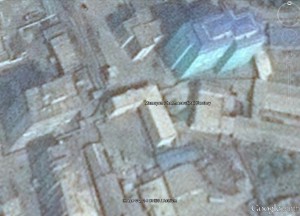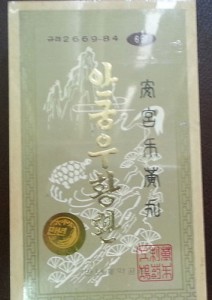Institute for Far Eastern Studies (IFES)
2014-6-5
It appears that the Kim Jong Un regime’s core slogan of “constructing a powerful knowledge economy nation” is being propelled by the development of high-tech development zones.
The need to switch to a knowledge economy is emphasized in the newest issue of the quarterly North Korean academic journal Kyongje Yongu (published April 30, 2014). According to a thesis included in this quarter’s issue (entitled “The Creation of High-Tech Development Zone is Necessary Step in the Knowledge Economy Era”), “Using high-tech development zones as a model, the establishment of a high-tech industry and the shifting of the entire economy towards a knowledge economy is both a Party initiative and legal demands to the construction of a knowledge economy.”
Alongside the national goals of becoming both an economic superpower as well as an athletically powerful nation, the Kim Jong Un regime has also established the national goal of becoming a leader among knowledge economy countries. In order to establish a foothold for building the country’s knowledge economy, the regime has proposed the construction of high-tech development zones.
After attracting foreign investments to fund economic development zones (EDZ) last year, North Korea has begun pushing forward for the construction of a high-tech development zone in the city of Pyongsong, located in South Pyongan province. The high-tech development zone will be built in the same area as the Unjong Science and Technology Zone and will share a similar locale with the National Academy of Sciences, both of which are located in the South Pyongan Province.
According to the thesis, high-tech development zones will “act as regional bases that bring technology and production closer together, unifying the research-development-production-export process.” The thesis also explains the characteristics of the high-tech development zone, calling it a “new type of development region with a high concentration of information, technology, and talented individuals” and “a place where education, scientific research, and production are brought together to become one.”
Furthermore, the thesis continues, “Through the improvement of the high-tech development zone, existing businesses have begun to change to information-related businesses,” and noted that, “Just as the foundation of the high-tech development zone is important to the construction of a powerful knowledge economy, it is also important to provide support from the state and the Party.”
In November of 2013, North Korea formed an international consortium of foreign companies to initiate the building of the Kaesong High-Tech Development Zone; however, construction has reportedly been suspended.
North Korea is currently pressing for construction of a type of cooperative complex to be built in the high-tech development zone where research and development, as well as production itself can take place in order to produce technologically-intensive products with high added value. However, due to sanctions imposed by the international community, North Korea is unable to acquire the advanced machinery it needs to construct the high-tech zone, and for now has only drawn out a rough sketch of the framework.
On the other hand, North Korea has also spurred progress in light industry in other regions by rewarding exemplary factories. This is seen as an attempt to increase the standard of living for the locals living in those regions, who have taken it upon themselves to improve light industry to best suit their situations.
Companies in Hoeryong, North Hamgyong Province, Wonsan, Kangwon Province, Chinchon [?], Chagang Province, and other regions have become recognized in North Korean media for their “innovations.” In Hoeryong, a chemical commodities factory developed fuel additives for lignite that increase its burning ability and efficiency, and was commended for its contribution in solving its citizens’ fuel problems. Other factories that were chosen to receive rewards include a glass bottle factory in Wonsan, and a wooden commodities factory in Chinchon[?] for increasing the production quality of their respective goods.
In a situation where the central authorities are in a vulnerable situation financially, North Korea has been encouraging regional businesses to grow and develop on their own. This not only increases the standard of living for the people, but encourages balanced regional development as well. Another thesis appearing in the most recent issue of Kyongje Yongu argues, “The comprehensive development of the regional economies has greatly reduced the state’s burden by allowing households to take it upon themselves to meet their needs according to their own situation.
Furthermore, regarding the growth of regional light industry, the thesis says, “general consumer goods are now being mass-produced, and are able to fulfill the region’s supply and demand needs,” emphasizing the use of “small quantity batch production.” Other light industry factories are also being built across the nation as part of the efforts to revitalize North Korea’s local economies.
Recently, construction of the Haeju Unjong Beer Factory was finished. Operations have commenced in Southern Hwanghae Province, and construction of the Musanryong Spring Water Factory was completed in late 2013. While North Korea’s plan to develop its local economies is not exactly breaking news, advances are slowly being made toward achieving the Kim Jong Un regime’s national goals.
* NKeconWatch: I have no idea why this article references a place in Jagang Province called “Chinchon”. Maybe they mean Huichon?


